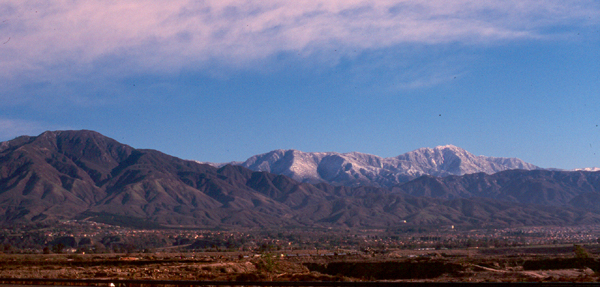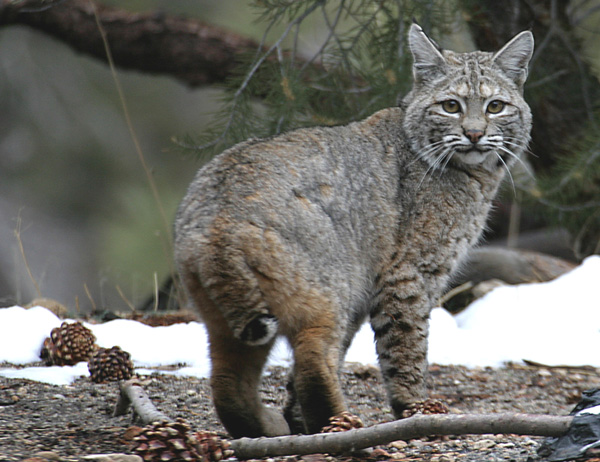San Bernardino National Forest
Over 100 Years of Splendor as a National Forest
Mountains, Lakes, Wildlife & Campgrounds
The wild lands of the San Bernardino and San Jacinto Mountain Ranges were designated a National Forest more than a hundred years ago.
The Forest Reserve Act was passed in 1891, giving the president authority to "set apart and reserve, in any state or territory having public land bearing forests . . . as public reservations." From this act was born the San Bernardino Forest Reserve, which became the San Bernardino National Forest in 1907. The San Bernardino National Forest as public land was set aside for the conservation of natural resources such as trees, water, minerals, livestock range, recreation, or wildlife.
Today, the San Bernardino National Forest serves as southern California's outdoor year-around recreation destination, as well as providing valuable watershed protection. Drive the scenic Rim of the World Scenic Byway and Palms to Pines Scenic Byways to discover your local National Forest.
The San Bernardino National Forest is comprised of three Ranger Districts spanning 676,666 acres in San Bernardino and Riverside counties.
Our Mountains
San Bernardino National Forest

San Bernardino Peak

Mount San Jacinto

Santa Rosa Mountains
Bighorn Mountains Wilderness
Our Lakes
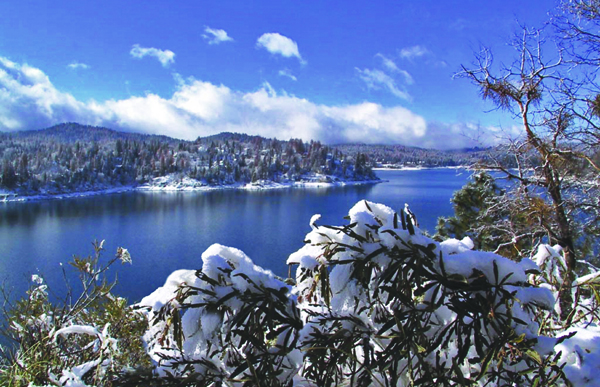
Lake Arrowhead

Baldwin Lake
Big Bear Lake
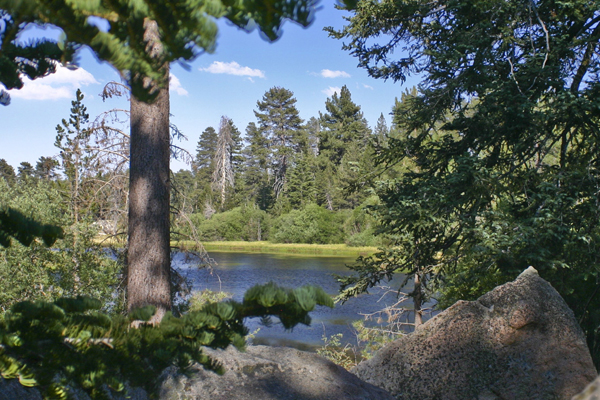
Bluff Lake
Green Valley Lake
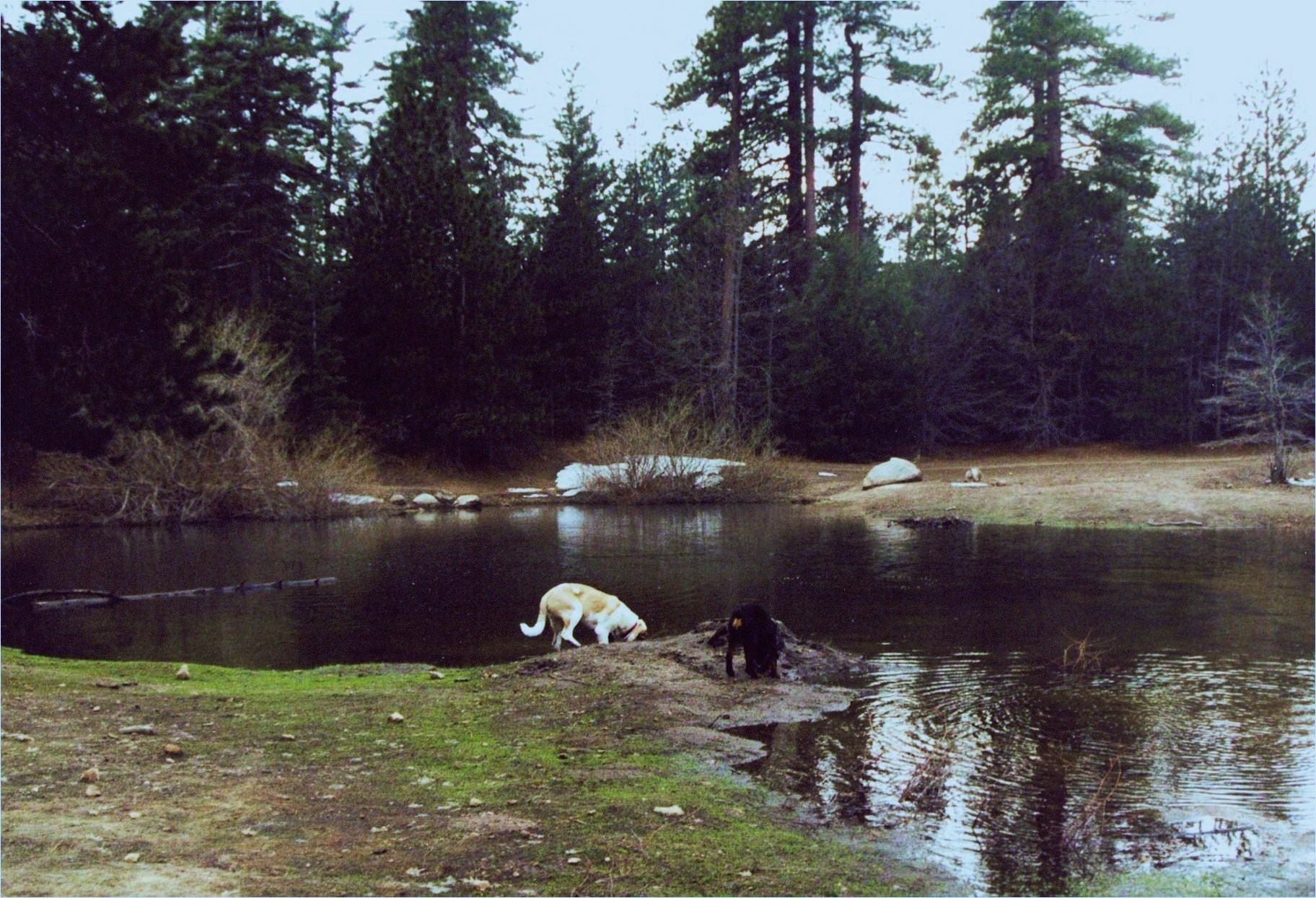
Gregory Pond
.jpg)
Lake Silverwood
Our Wildlife

Black Bear
American black bears tend to be territorial and non-gregarious in nature. They mark their territories by rubbing their bodies against trees and clawing at the bark. Black bears are excellent and strong swimmers, doing so for pleasure and to feed. Black bears climb regularly to feed, escape enemies or to hibernate. Their arboreal abilities tend to decline with age. Adult black bears are mostly nocturnal, but juveniles are often active in daytime.
Black bears enter their dens in October and November. They spend their time in hollowed-out dens in tree cavities, under logs or rocks, in banks, caves, or culverts, and in shallow depressions. A special hormone, leptin is released into their systems, to suppress appetite. Black bears use dense cover for hiding and thermal protection, as well as for bedding.
Although black bears rarely attack and generally avoid people, they are powerful animals and are capable of injuring or killing people. A bear can be very dangerous if provoked or conditioned to people. “Conditioned” means the bear is used to be being around humans. A conditioned bear may associate people with food sources. This may turn a bear into a “problem animal” and will have to be dealt with aggressively; sometimes at the expense of its life.
These steps may be helpful if you encounter a bear:
- If you see a bear in the distance, make a wide detour or leave the area. Give a bear plenty of room to pass, and it usually will. Never surround or corner a bear.
- Do not feed or toss food to a bear, or any other wild animal.
- Pick up children or put them on your shoulders.
- Never approach bears - they are wild animals. If a bear changes its natural behavior because of your presence, you are too close!
- If a bear approaches you:
- Don't run-- back slowly away and make lots of noise.
- Face the bear, but don't look directly into its eyes.
- Keep it in sight.
- Make yourself look bigger by waving your arms and yelling.
- Make lots of noise and stomp your feet. Bang things together, throw rocks and sticks.
Remember, you can't outrun a black bear. They are extremely fast on the ground or climbing a tree. Warning signs of an attack include: a steady glare; ears laid back; smacking of the jaws and stomping of the front feet. If the bear attacks, fight back with anything available. Act aggressively. Throwing rocks or hitting a bear with large sticks has been effective some cases. Playing dead is not appropriate.

Bighorn Sheep
The bighorn sheep (Ovis canadensis) is a species of sheep in North America named for its large horns. Recent genetic testing indicates that there are three distinct subspecies of Ovis canadensis, one of which is endangered: Ovis canadensis sierrae. By 1900 the population had crashed to several thousand. Conservation efforts (in part by the Boy Scouts) have restored the population.
There are two types of bighorn sheep in our forest: the Peninsular bighorn sheep(Ovis canadensis); and the Nelson's bighorn sheep (Ovis canadensis nelsoni), the most common desert bighorn sheep, ranges from California through Arizona.
Bighorn sheep generally inhabit alpine meadows, grassy mountain slopes and foothill country near rugged, rocky cliffs and bluffs. Since bighorn sheep cannot move though deep snow, they prefer drier slopes where the annual snowfall is less than about sixty inches a year. A bighorn's winter range usually lies 2,500-5,000 feet in elevation, while its summer range is tends to be 6,000-8,500 feet. Bighorns are well adapted to climbing steep terrain where they seek cover from predators. Bighorn sheep of all ages are threatened by bears, wolves and especially cougars, which are perhaps best equipped with the agility to predate in uneven, rocky habitats.
Bighorn sheep graze on grasses and browse shrubs, particularly in fall and winter, and seek minerals at natural salt licks. Females tend to forage and walk, possibly to avoid predators and protect lambs, while males tend to eat and then rest and ruminate which lends to more effective digestion and greater increase in body size.
Bobcat
The bobcat is a North American mammal of the cat family. The bobcat is an adaptable predator that inhabits wooded areas, as well as semi-desert, urban edge, forest edges, and swampland environments. It persists in much of its original range and populations are healthy.
With a gray to brown coat, whiskered face, and black-tufted ears, the bobcat resembles the other species of the mid-sized Lynx genus. It is about twice as large as the domestic cat. It has distinctive black bars on its forelegs and a black-tipped, stubby tail, from which it derives its name.
Though the bobcat prefers rabbits and hares, it will hunt anything from insects and small rodents to deer. Prey selection depends on location and habitat, season, and abundance. Like most cats, the bobcat is territorial and largely solitary, although there is some overlap in home ranges. It uses several methods to mark its territorial boundaries, including claw marks and deposits of urine or feces. The bobcat breeds from winter into spring and has a gestation period of about two months.
The bobcat keeps on the move from three hours before sunset until about midnight, and then again from before dawn until three hours after sunrise. Each night it will move from 2 to 7 miles (3.2 to 11 km) along its habitual route. This behavior may vary seasonally. This is a response to the activity of their prey, which are more active during the day in colder months.

Coyote
The coyote is also known as the American jackal or the prairie wolf, is a species of canine found throughout North and Central America, ranging from Panama in the south, north through Mexico, the United States and Canada. It occurs as far north as Alaska and all but the northernmost portions of Canada.
Though coyotes have been observed to travel in large groups, they primarily hunt in pairs. Typical packs consist of six closely related adults, yearlings and young. Coyote packs are generally smaller than wolf packs. Coyotes are primarily noturnalbut can often be seen during daylight hours.
Coyotes are opportunistic, versatile carnivores with a 90% mammalian diet, depending on the season. They primarily eat small mammals, such as voles, prairie dogs, ground squirrels and mice, though they will eat birds, snakes, lizards, deer, and livestock, as well as large insects and other large invertebrates. The coyote will also target any species of bird that nests on the ground. Though they will consume large amounts of carrion, they tend to prefer fresh meat. Fruits and vegetables are a significant part of the coyote's diet in the autumn and winter months.
Part of the coyote's success as a species is its dietary adaptability. As such, coyotes have been known to eat human rubbish and domestic pets. Urban populations of coyotes have been known to actively hunt cats, and to leap shorter fences to take small dogs. In particularly bold urban packs, coyotes have also been reported to shadow human joggers or larger dogs, and even to take small dogs while the dog is still on a leash. However, this behavior is often reported when normal urban prey, such as rats and rabbits, have become scarce.

Mountain Lion
The mountain lion is a mammal of the family Felidae, native to the Americas. This large, solitary cat has the greatest range of any large wild terrestrial mammal in the Western Hemisphere. An adaptable, generalist species, the mountain lion is found in every major American habitat type. It is the second heaviest cat in the Western Hemisphere, after the jaguar. Although large, is most closely related to smaller felines and is closer genetically to the domestic cat than to true lions. Like the smaller felines, the cougar is nocturnal.
A capable stalk-and-ambush predator, the mountain lion pursues a wide variety of prey. Primary food sources include deer, elk and bighorn sheep. This cat prefers habitats with dense underbrush and rocky areas for stalking, but it can also live in open areas. The mountain lion is territorial and persists at low population densities. It is a reclusive cat and usually avoids people. Attacks on humans remain fairly rare, despite a recent increase in frequency.

Mule Deer
California Mule Deer is a subspecies of mule deer whose range covers much of the state of California. Generally this species has a preference for hill terrain, especially an oak woodland habitat. The California mule deer is a browser and will typically take over ninety percent of its diet from shrubs and leaves and the balance from grasses. One of the principal means of distinguishing the closely related black-tailed deer and white-tailed deer is the growth habit of the buck's antlers. In the case of the California mule deer, the antlers fork in an upward growth, whereas the other species' antlers grow in a forward direction.
California mule deer usually browse close to lakes or streams providing their water source. From that reference point of water consumption they may roam one to two miles, and typically make their beds in grassy areas beneath trees within such a one mile distance radius from both water and forage. Repeated beds will often be scratched to a nearly level surface, about two meters in diameter. Less regularly used bedding areas are manifested as flattened grass. hot summer days California mule deer often seek shade and rest in the mid-day.

Raccoon
The raccoon is a medium-sized mammal native to North America. It is usually nocturnal and is omnivorous, with a diet consisting of about 40% invertebrates, 33% plant foods, and 27% vertebrates. It has a grayish coat, of which almost 90% is dense underfur, which insulates against cold weather. Two of its most distinctive features are its extremely dexterous front paws and its facial mask, which are themes in the mythology of several Native American tribes. Raccoons are noted for their intelligence, with studies showing that they are able to remember the solution to tasks up to three years later.
The original habitats of the raccoon are deciduous and mixed forests of North America, but due to their adaptability they have extended their range to mountainous areas, coastal marshes, and urban areas, where many homeowners consider them to be pests.
Though previously thought to be solitary, there is now evidence that raccoons engage in gender-specific social behavior. Related females often share a common area, while unrelated males live together in groups of up to four animals to maintain their positions against foreign males during the mating season, and other potential invaders.

Squirrel
Squirrels breed once or twice a year and give birth to a varying number of young after three to six weeks, depending on species. The young are born naked, toothless, and blind. Ground-dwelling species are generally social animals, often living in well-developed colonies, but the tree-dwelling species are more solitary
Squirrels cannot digest cellulose, so must rely on foods rich in protein, carbohydrates, and fats. Squirrels' diets consist primarily of a wide variety of plants, including nuts, seeds, conifer cones, fruits, fungi and green vegetation. However, some squirrels also consume meat, especially when faced with hunger. Squirrels have been known to eat insects, eggs, small birds, young snakes and smaller rodents.
Our Campgrounds
Family Campgrounds
Arrowhead
Crab Flats
29 Sites, 29' Space Length
Dogwood
93 Sites, 22' Space Length
Green Valley
36 Sites, 22' Space Length
North Shore
27 Sites, 22' Space Length
Big Bear
Big Pine Flat
19 Sites, 30' Space Length
Hanna Flats
88 Sites, 35' Space Length
Holcomb Valley
19 Sites, 25' Space Length
Horse Springs
15 Sites, 25' Space Length
Pineknot
52 Sites, 35' Space Length
Serrano
132 Sites, 55' Space Length
Cajon
Applegwhite
44 Sites, 30' Space Length
San Gorgonio
Barton Flats
52 Sites, 55' Space Length
San Gorgonio
54 Sites, 55' Space Length
Heart Bar
95 Sites, 50' Space Length
South Fork
24 Sites, 30' Space Length
Wildhorse
11 Sites, 50' Space Length
San Jacinto
Boulder Basin
34 Sites, 15; Space Length
Dark Canyon
17 Sites, 15' Space Length
Fern Basin
22 Sites, 15' Space Length
Marion Mountain
24 Sites, 15' Space Length
Pinyon Flat
18 Sites, 15' Space Length
Ribbonwood
8 Sites, 50' Space Length
Group Campgrounds
Arrowhead
Fisherman's
4 Sites, 8 People
Shady Cove
3 Sites, 30 People
Tent Peg
30 People
Big Bear
Big Pine Flat
25 People
Bluff Mesa
40 People
Boulder
40 People
Buttercup
40 People
Deer
40 People
Gray's Peak
40 People
Green Spot
25 People
Ironwood
25 People
Juniper Spring
40 People
Tanglewood
40 People
San Gorgonio
Coon Creek Cabin
25 People
Council
50 People
Heart Bar
65 People
Lobo
75 People
Oso
100 People
Skyline
25 People
San Jacinto
Black Mountain
100 People
Ribbonwood
75 People
